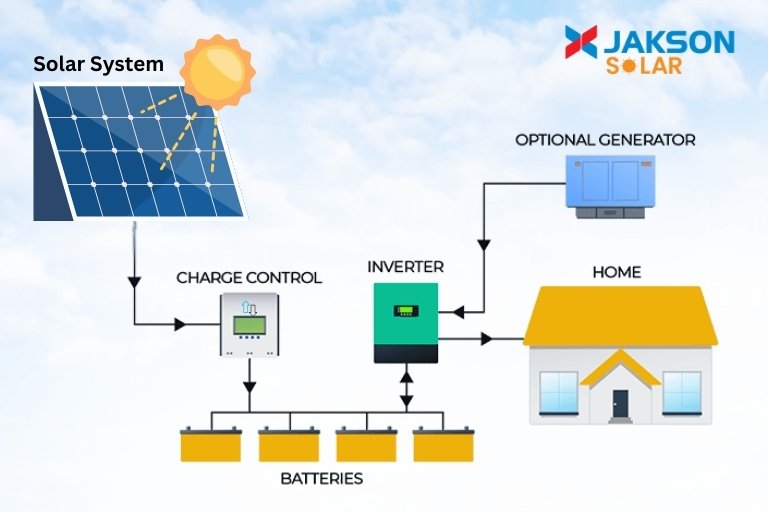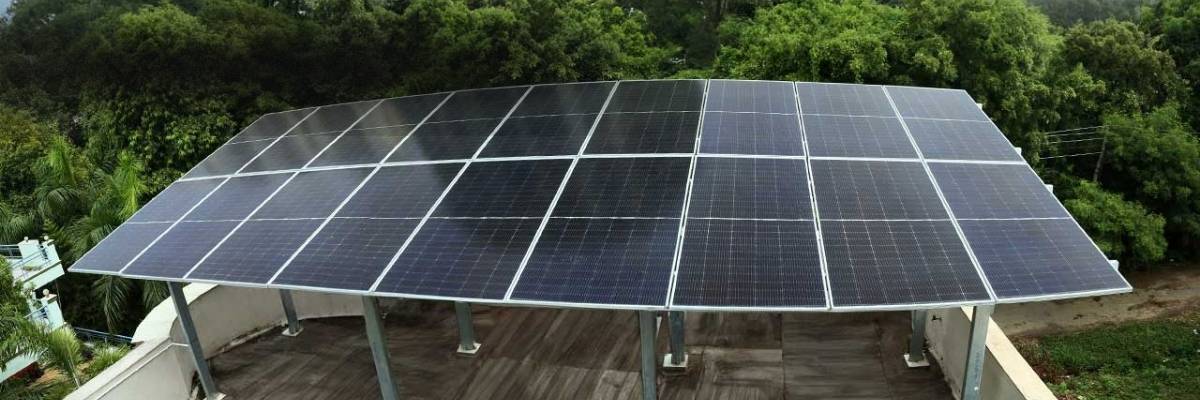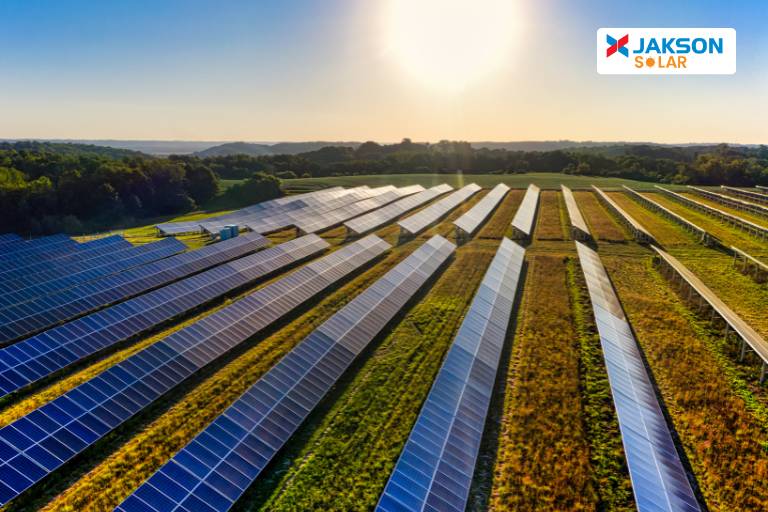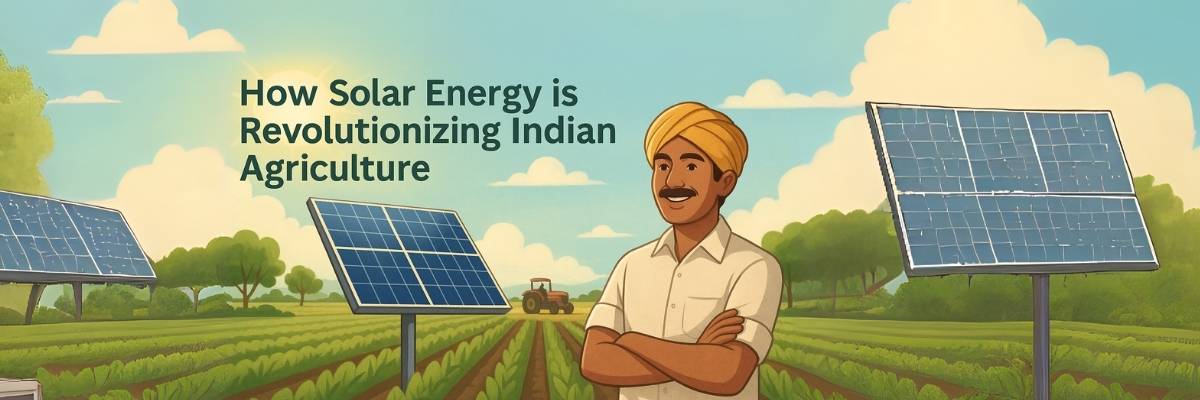A solar water pump system in India is the best alternative to natural energy.
In this system, free light energy from the sun is utilised to serve various purposes like irrigation, livestock, or supplying water to homes in villages.
In today’s era, this kind of setup is one of the best energy alternatives to on-grid or diesel energy.
The photovoltaic (PV) panels in the solar water pump help capture sunlight and then convert it into electricity, which powers the motor of the water pump.
This simple energy transformation makes solar water pumps useful in rural or remote areas where the electricity supply is unreliable or unavailable.
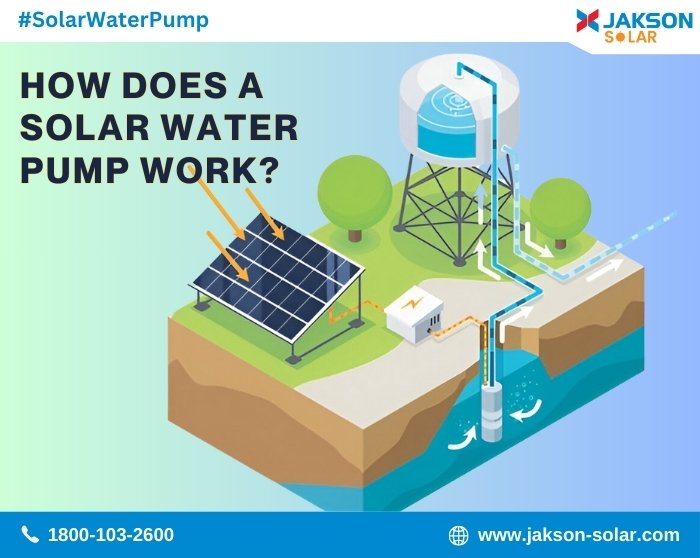
How does a Solar Water Pump work?
We know the concept of solar energy that converts the light energy of the sun into electricity.
This energy transformation is done through solar modules or solar panels. The basic parts used in a solar water pump are – solar panels, a solar controller, a water pump, and a water storage.
Basic components of a solar water pump system:
- Solar Panels: Help to capture light energy from the sunlight and then convert it into electrical energy.
- Controller: It helps in regulating the power and protects against voltage fluctuations.
- Pump (Surface or Submersible): Moves water to where it’s needed- fields, tanks, or homes.
- Water Storage: Often, a tank is used to store water for use when sunlight is low.
When the sun shines, the solar panels generate electricity, which powers the pump. Some solar water pump systems may need batteries to store extra energy to ensure a water supply during cloudy days.
Types of Solar Water Pumps
There are several types of solar water pump systems. Choosing the right type of solar pump depends on the water source and how deep the water source.
- Surface Pumps: These are placed above ground, ideal for shallow water sources (less than 10 meters deep).
- Submersible Pumps: Installed below ground in deep wells or boreholes, suitable for water tables deeper than 10 meters.
- DC Pumps: Run directly on the electricity produced by solar panels.
- AC Pumps: Use an inverter to convert solar DC power to AC for the pump motor.
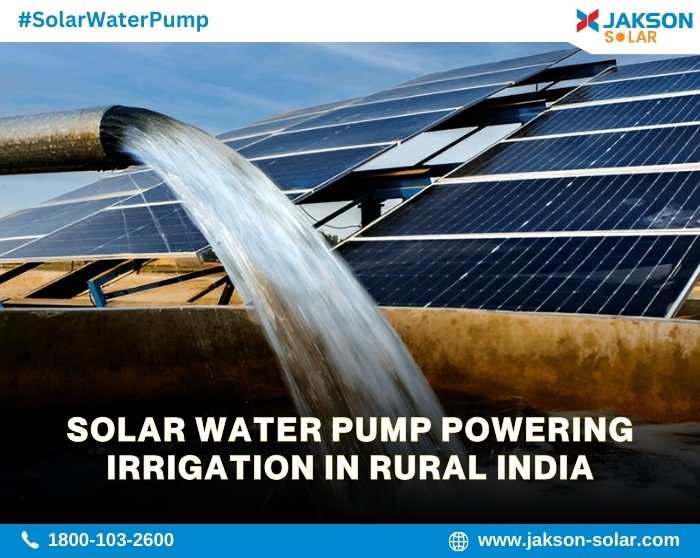
Top 5 Benefits of Using Solar Water Pump for Irrigation
1. Cost Savings:
Once installed, a solar water pump has almost zero running costs. Sunlight is free, and there’s no need to buy fuel or pay electricity bills. Over time, this leads to significant savings for farmers and households in remote areas.
2. Low Maintenance:
Solar water pumps run on power from solar panels, so they don’t have many complex parts. The only main moving part is the pump, which is much easier to take care of than a diesel engine that has many mechanical parts.
3. Reliable Water Supply:
A solar water pump system is not affected by power cuts or low voltage, making it a dependable option for rural areas.
4. Environmentally Friendly:
Water pumps with solar power do not burn fossil fuels, so there are no carbon dioxide emissions. Solar water pump functions silently and does not cause noise pollution.
5. Supports Sustainable Agriculture:
Farmers can irrigate crops even in remote areas, improving yields and supporting food security.

Government Support: Solar Water Pump Subsidy
The Indian government is helping farmers use solar water pumps by offering financial support.
The PM-KUSUM scheme makes these pumps more affordable. Through this scheme, farmers can get 30% to 70% of the total cost as a subsidy, depending on the state and the type of pump.
In some states, the subsidy is even higher. Applying is also easier now.
Farmers can apply online for a Subsidy on a Solar Water Pump at the National Portal for PM-KUSUM YOJNA
These schemes are helping farmers and rural families set up water pump solar systems, save on fuel costs, and improve their daily lives.
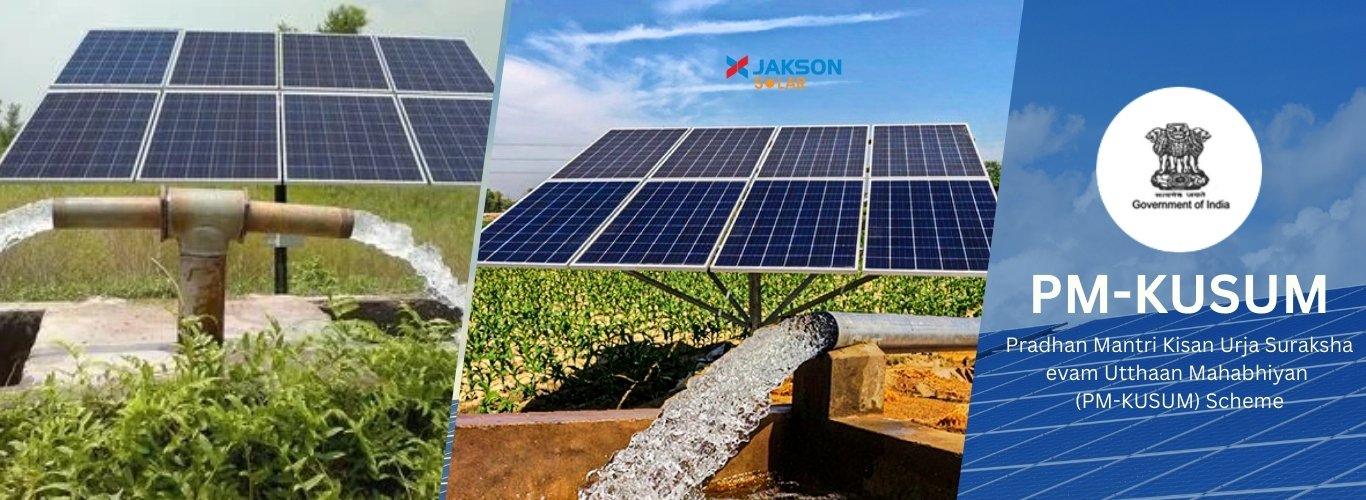
The Future of Solar Water Pumps in India
As solar panels and battery technology continue to improve, the future looks promising for solar water pumps in India.
The PM-KUSUM scheme is an initiative of the government that aims to lower the cost of crop production at the ground level and reduce emissions.
The aim here is to use solar energy to power the agricultural operations and to replace traditional energy sources. This scheme aims to install millions of solar water pumps across India by 2025.
With better technology and falling prices, these systems are becoming easier for farmers to afford and use.
Solar water pump – A boon to a farming community
Energy is going to be expensive in the future, and switching to cleaner energy is the ultimate solution. We need to choose the best energy system that is eco-friendly and economical. Solar energy assures both.
Solar energy has already been adopted in many sectors, and agriculture, it’s making its way rapidly. A solar-powered water pump is not just a technology, it is an energy boon to the agricultural sector.
The more we embrace solar water pump systems in agriculture, the more we save on energy costs and reduce emissions.
For more information:
Call Jakson Solar Experts at: 1800-103-2600 (Toll Free)
OR
Email at: solar-bu@jakson.com



